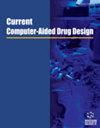Design, In Silico Screening, Synthesis, Characterisation and DFT-based Electronic Properties of Dihydropyridine-based Molecule as L-type Calcium Channel Blocker
IF 1.6
4区 医学
Q4 CHEMISTRY, MEDICINAL
引用次数: 0
Abstract
Objective: The objectives of this study are first to design potential antihypertensive drugs based on the DHP scaffold, secondly, to analyse drug-likeness properties of the ligands and investigate their molecular mechanisms of binding to the model protein Cav1.2 and finally to synthesise the best ligand. Methods: Due to the lack of 3D structures for human Cav1.2, the protein structure was modelled using a homology modelling approach. A protein-ligand complex's strength and binding interaction were investigated using molecular docking and molecular dynamics techniques. DFT-based electronic properties of the ligands were calculated using the M06-2X/ def2-TZVP level of theory. The SwissADME website was used to study the ADMET properties. Results: In this study, a series of DHP compounds (19 compounds) were properly designed to act as calcium channel blockers. Among these compounds, compound 16 showed excellent binding scores (-11.6 kcal/mol). This compound was synthesised with good yield and characterised. To assess the structural features of the synthesised molecule quantum chemical calculations were performed. Conclusion: Based on molecular docking, molecular dynamics simulations, and drug-likeness properties of compound 16 can be used as a potential calcium channel blocker.作为 L 型钙通道阻滞剂的二氢吡啶类分子的设计、硅学筛选、合成、表征和基于 DFT 的电子特性
研究目的本研究的目的首先是基于 DHP 支架设计潜在的抗高血压药物,其次是分析配体的药物相似性并研究其与模型蛋白 Cav1.2 结合的分子机制,最后是合成最佳配体。研究方法由于缺乏人Cav1.2的三维结构,因此采用同源建模方法对蛋白质结构进行建模。利用分子对接和分子动力学技术研究了蛋白质-配体复合物的强度和结合相互作用。使用 M06-2X/ def2-TZVP 理论水平计算了配体的 DFT 电子特性。使用 SwissADME 网站研究了 ADMET 特性。研究结果本研究适当设计了一系列 DHP 化合物(19 个化合物)作为钙通道阻滞剂。在这些化合物中,化合物 16 显示出优异的结合分数(-11.6 kcal/mol)。该化合物的合成收率很高,并已定性。为了评估合成分子的结构特征,对其进行了量子化学计算。结论:基于分子对接、分子动力学模拟和药物相似性,化合物 16 可用作一种潜在的钙通道阻滞剂。
本文章由计算机程序翻译,如有差异,请以英文原文为准。
求助全文
约1分钟内获得全文
求助全文
来源期刊

Current computer-aided drug design
医学-计算机:跨学科应用
CiteScore
3.70
自引率
5.90%
发文量
46
审稿时长
>12 weeks
期刊介绍:
Aims & Scope
Current Computer-Aided Drug Design aims to publish all the latest developments in drug design based on computational techniques. The field of computer-aided drug design has had extensive impact in the area of drug design.
Current Computer-Aided Drug Design is an essential journal for all medicinal chemists who wish to be kept informed and up-to-date with all the latest and important developments in computer-aided methodologies and their applications in drug discovery. Each issue contains a series of timely, in-depth reviews, original research articles and letter articles written by leaders in the field, covering a range of computational techniques for drug design, screening, ADME studies, theoretical chemistry; computational chemistry; computer and molecular graphics; molecular modeling; protein engineering; drug design; expert systems; general structure-property relationships; molecular dynamics; chemical database development and usage etc., providing excellent rationales for drug development.
 求助内容:
求助内容: 应助结果提醒方式:
应助结果提醒方式:


